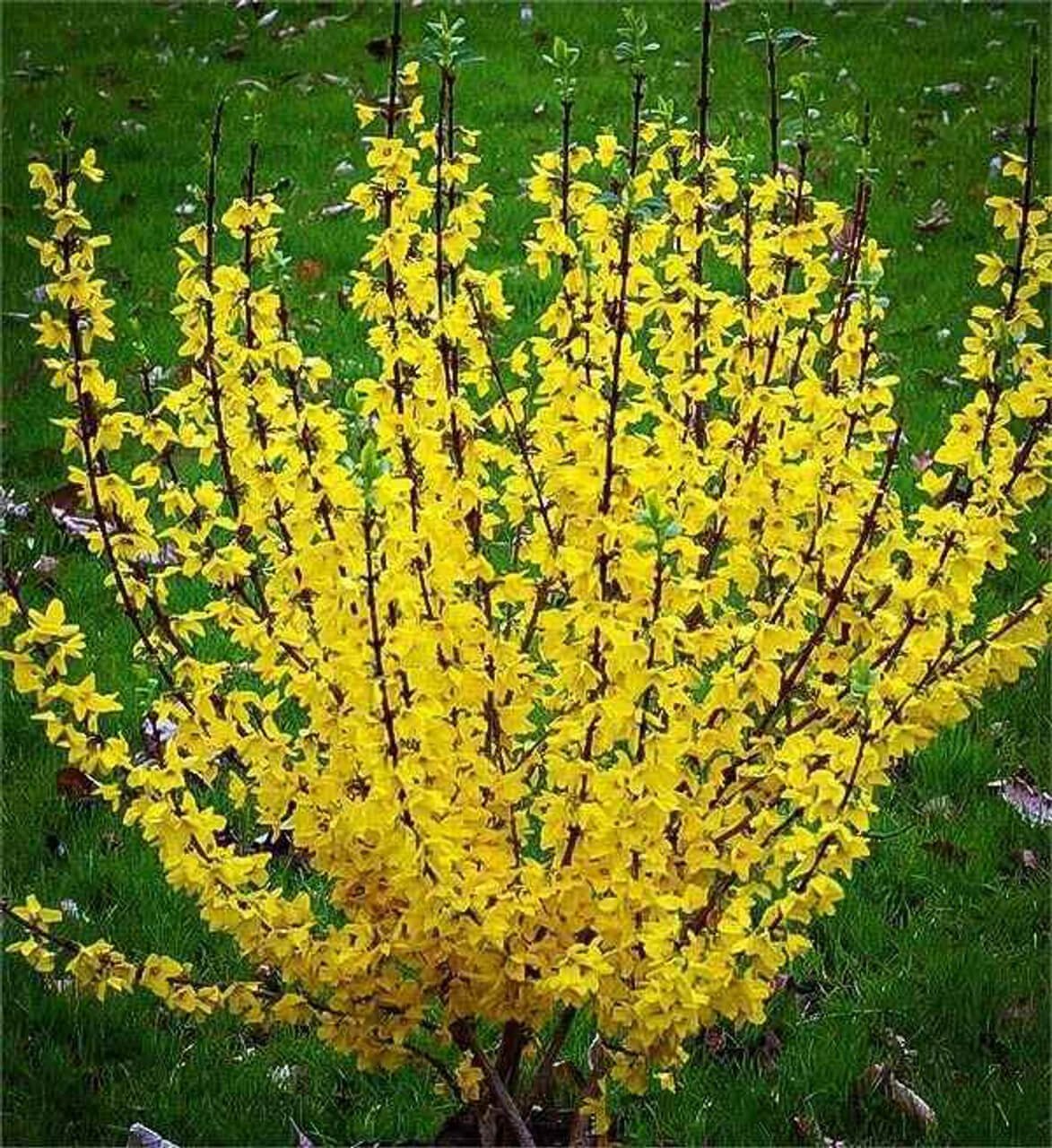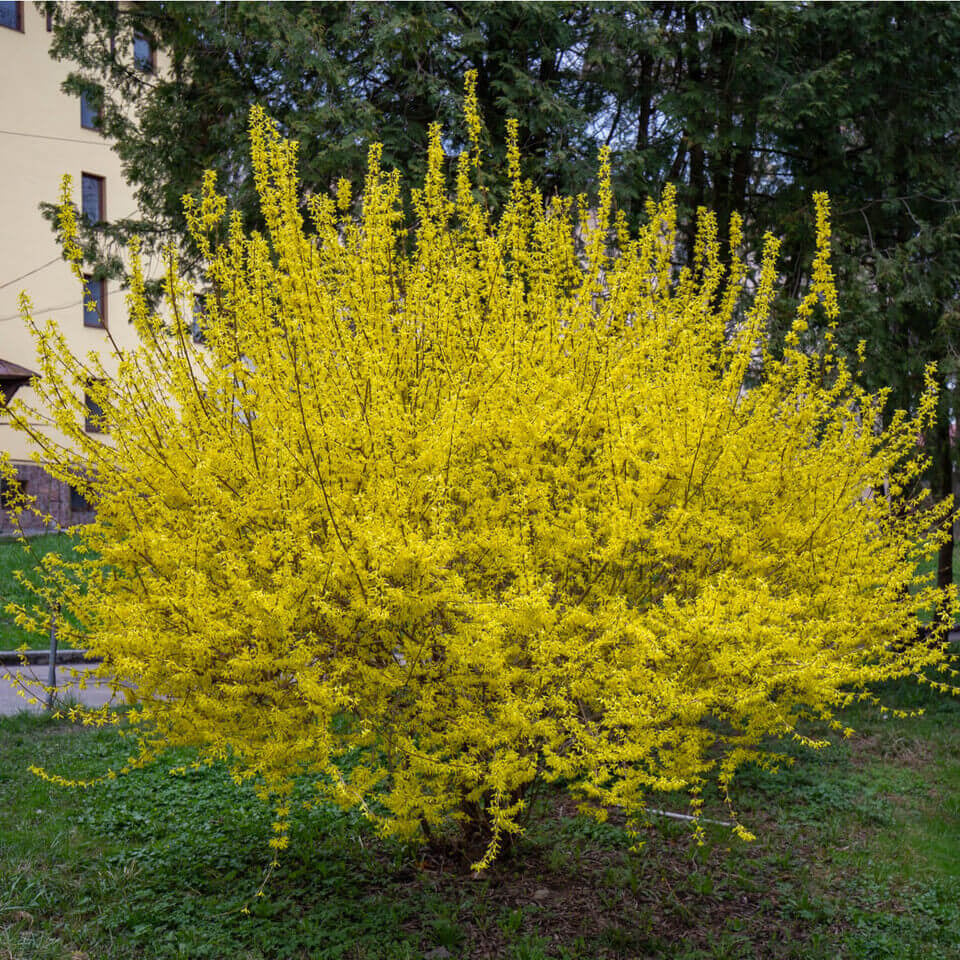



Forsythia
This plant ships:
NowWe sell bare root plants - click here to see what you'll receive
Forsythia - intermedia
The forsythia shrub was introduced in the eighteenth century. Plant hunter Robert Fortune discovered it, which is known for early spring flowering on bare branches. This deciduous shrub with flowers is said to produce lactose.
The early arrival of spring is signaled by the explosion of yellow flowers from the ground to the tips of each descending branch of the shrub. Before the leaves even appear, the bare branches fill with sunshine-colored blossoms shaped like golden bells.
Forsythia Has Golden Bells For Blooms
Extremely fast-growing, between one and two feet per year, these shrubs benefit from regular pruning. Pruning encourages thicker growth and an increase in flower production. Because of their popularity, they are appealing grown either as hedgerows or as single bushes.
The golden yellow shrub takes up a lot of space in a garden. However, many gardeners like using flowering stems to frame or form backbones in different arrangements. This popular plant is often called "Golden Bells" due to the yellow, bell-shaped flowers born along the arching stems.
Forsythia Colors and Characteristics
The yellow flowers can range from light buttery to deep, rich gold. The narrow toothy leaves grow two to ten cm long and are aligned opposite each other down the gray-brown, long, weeping branches. Joining together only at the base, the four-lobed flower's petals are deep and protect the reproductive organs during rainy weather.
Height at Maturity
Typically, the shrub can grow up to 9 feet 10 inches tall and sometimes even up to 20 feet and up to 9 feet wide. The winged seeds are encased in a dry capsule. These vase-shaped shrubs generally grow in a splay-like or drooping pattern, and when pruning is not kept up, the shrub can end up looking as if it were having a bad hair day.
Hardy Planting Zones and Propagation Success
The hardy zones are 4 – 9 and thrive in sun and well-drained soil. They grow best in full sun and well-drained soil. This plant makes for a spectacular border; with individual shrubs spaced about 10 inches apart, they will grow into a naturally dense border.
Forsythia plants have big, bright yellow flowers and mid to dark-green foliage. The propagation of the shrub is simple by anchoring low-hanging boughs to the soil. Once new roots have developed, they can be dug up, cut from the main branch, and transplanted.
Another method is taking cuttings from the soft wood in late spring and early summer when there is new growth and planting them in well-drained but moist soil. Cuttings can also be taken from November through February.
Fertilizer and Plant Attractants
An all-purpose fertilizer can be added mid-February through mid-May as a light feeding to benefit the shrubs. It is best to transplant the newly propagated plants during the dormant winter season. These plants do not attract wildlife such as butterflies or birds, so adding native plants to your display is advised.
| Planting zone | [4, 5, 6, 7, 8, 9] |
|---|---|
| Bloom season | Spring |
| Bloom color | Yellow |
| Height At Maturity | Under 10 Feet |






Forsythia
This plant ships:
Now| Planting zone | [4, 5, 6, 7, 8, 9] |
|---|---|
| Bloom season | Spring |
| Bloom color | Yellow |
| Height At Maturity | Under 10 Feet |

